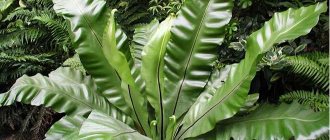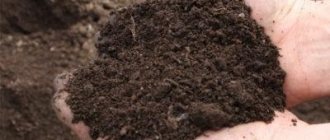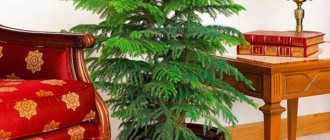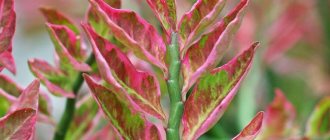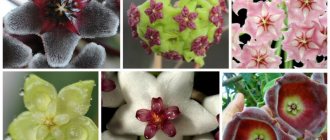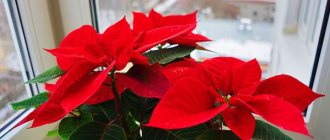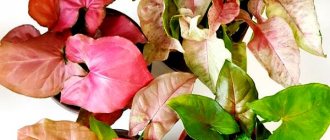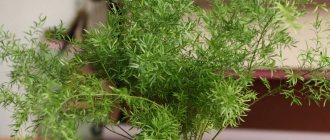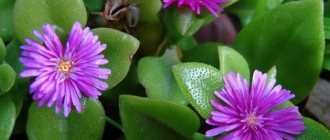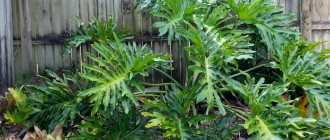Asplenium or kostenets is a spectacular and unpretentious fern that can be grown both as a herbaceous plant for the open ground of a personal plot, and as an indoor flower. It is found in nature in almost all climatic zones, but depending on the place of growth, its varieties and characteristics change. In tropical latitudes, its leaves can grow up to 2 meters in length, and the plant itself can look like a large green fountain. As you move into more temperate zones, its size becomes more modest; northern asplenium is a potted version of tropical varieties.
general description
The plant belongs to the large Aspleniaceae family and can be either an epiphytic or terrestrial fern, in most species adapted for growing at home.
There are 11 wild varieties of crops found in our country. The shape of the leaves forming a rosette can vary greatly depending on the species; the plates can be entire, pinnately dissected, with partially wavy edges, as well as elongated xiphoid or triangular. Spores traditionally form on the lower part of the leaf. The rhizome is covered with soft small scales, short vertical or creeping in appearance. As it grows, the bush spreads outwards due to the constant growth of leaves from the center of the rosette.
This fern reacts extremely painfully to touching its leaves, so when caring for asplenium, it is recommended to touch it as little as possible.
Application in site design
Asplenium is widely used in landscape design: its combination with other species and varieties of fern will create picturesque compositions. But it should be remembered that low-growing species will be lost against the background of tall fern bushes, so the plants should not differ greatly in size from each other.
Kostenets is planted to decorate rockeries, alpine hills, rocky shores of small artificial reservoirs, and borders. You can also use it to decorate spaces on the north side of the garden or cottage.
Asplenium is relatively easy to grow. Compliance with all planting and care conditions will allow you to acquire an original green garden decoration.
Source
Popular types of asplenium with photos
When choosing a variety for growing in open soil, it is worth paying attention to species that naturally grow in temperate latitudes. They will take their rightful place on an alpine hill, in a rock garden, in a rocky garden, since they love to settle in shady forests on mountain slopes and on rocks. If you plan to grow asplenium as a houseplant, then tropical species will be the best choice.
Asplenium nested (nest-shaped)
It is an epiphytic species that lives on living trees, plants or snags. Growing such species in culture requires a special approach and is not recommended for beginners. Caring for such species is very similar to growing representatives of the Bromeliad family. The leaves of this type of stone are entire, leathery, dark green, up to 75 cm in length, forming a wide-opening rosette. In the wild, it serves to accumulate water and various organic matter, which is used as food.
Asplenium bulbiferous
A widespread herbaceous plant for open ground, deciduous with triangular elongated pinnate leaves up to half a meter long, light green in color. Over time, brood buds form on them, producing numerous children. At high air humidity, they can take root on their own, falling onto the soil substrate after being separated from the mother bush. The birthplace of the species is New Zealand.
Asplenium South Asian
Place of natural growth - Polynesia. An epiphytic variety with wide and very long leaves, reaching 1.5 m in length in good conditions. The leaf rosette is narrow and dense, funnel-shaped. The whole, often unevenly cut leaves have an oblanceolate shape, sharply narrowing towards the bottom and widening towards the middle and above. The base of the rosette is very narrow, the rhizome is powerful, straight, short with a large number of adventitious branches.
Asplenium viviparous
A terrestrial variety with long (over half a meter) dissected arched leaves. Just like the leucine-bearing species, they produce children capable of independent rooting. Homeland - the island of Madagascar.
Asplenium hairy
Widely distributed in all climatic zones, therefore it can be grown on a personal plot. Frost resistance is high and does not require shelter in winter. Undemanding to soil characteristics, caring for hairy asplenium can be considered easy. This is a low fern up to 15-20 cm. The leaves are linear, pinnate, drooping, retaining their color in winter. The rhizome is straight and short.
The leaves of this variety are considered medicinal and have an expectorant, mild sedative and laxative effect. Can be used as a replacement for tea.
Asplenium nidus
An epiphyte with a developed creeping root system and wide dark green glossy leathery leaves with wavy edges. They can reach 90 cm in length. A dark brown, almost black large vein runs through the center of the leaf blade with smaller ones extending from it, which looks very impressive.
Asplenium antica (Osaka)
A very rare variety that can only be found among amateur collectors (partly due to its high cost). A distinctive feature of the species is its almost vertically standing leaves, reaching a meter in length. They have a very beautiful shape with corrugated edges, a rich dark green color and a shiny surface.
Asplenium black
A heat-loving species that can only be grown in open ground in hot climates, no colder than the Black Sea coast. In more northern regions it requires shelter or is grown at home.
Asplenium green
A variety widely distributed in the temperate zone, but preferring mountainous areas and rocky calcareous soils. The rhizome is short, oblique. From it, on shortened petioles, grow pinnate leaves, shortened in comparison with other varieties, no more than 20 cm long. All segments of the leaf shoot lie in the same plane. The petioles, like the leaves, are green. It can be grown in the garden and in rock gardens; the place for planting should be chosen shady and moist.
Excerpt characterizing Kostenets black
Kutuzov occupied a small noble castle near Ostralitsy. In the large living room, which became the office of the commander-in-chief, gathered: Kutuzov himself, Weyrother and members of the military council. They were drinking tea. They were only waiting for Prince Bagration to begin the military council. At 8 o'clock Bagration's orderly arrived with the news that the prince could not be there. Prince Andrei came to report this to the commander-in-chief and, taking advantage of the permission previously given to him by Kutuzov to be present at the council, remained in the room. “Since Prince Bagration will not be there, we can begin,” said Weyrother, hastily getting up from his place and approaching the table on which a huge map of the surrounding area of Brünn was laid out. Kutuzov, in an unbuttoned uniform, from which, as if freed, his fat neck floated out onto the collar, sat in a Voltaire chair, placing his plump old hands symmetrically on the armrests, and was almost asleep. At the sound of Weyrother's voice, he forced his only eye open. “Yes, yes, please, otherwise it’s too late,” he said and, nodding his head, lowered it and closed his eyes again. If at first the members of the council thought that Kutuzov was pretending to be asleep, then the sounds that he made with his nose during the subsequent reading proved that at that moment for the commander-in-chief it was about much more important than the desire to show his contempt for the disposition or for anything else. be that as it may: for him it was about the irrepressible satisfaction of a human need - sleep. He was really asleep. Weyrother, with the movement of a man too busy to waste even one minute of time, looked at Kutuzov and, making sure that he was sleeping, took the paper and in a loud, monotonous tone began to read the disposition of the future battle under the title, which he also read: “Disposition for attack of the enemy position behind Kobelnitsa and Sokolnitsa, November 20, 1805." The disposition was very complex and difficult. The original disposition included: DA Der Feind Mit Seinerien Linken Fluegel An Die Mit Wald Bedecten Berge Lehnt Sich Mit Seinerien Fluegs Kobeinitz Und Sokolienitz Hinter Die Dort BEFIND IChen Teiche Zieht, Wir IM Geegentheil Mit Unserem Linken Fluegel Seineen Rechten Sehr DeboDiren, So Ist es vortheilhaft letzteren Fluegel des Feindes zu attakiren, besondere wenn wir die Doerfer Sokolienitz und Kobelienitz im Besitze haben, wodurch wir dem Feind zugleich in die Flanke fallen und ihn auf der Flaeche zwischen Schlapanitz und dem Thuerassa Walde verfolgen koennen, indem wir dem De filen von Schlapanitz und Bellowitz ausweichen, welche die feindliche Front decken. Zu dieserien Endzwecke ist es noethig... Die erste Kolonne Marieschirt... die zweite Kolonne Marieschirt... die dritte Kolonne Marieschirt... [Since the enemy rests his left wing on the forest-covered mountains, and with his right wing he stretches along Kobelnitsa and Sokolnitsa behind the ponds located there, and we On the contrary, if our left wing surpasses his right wing, then it is advantageous for us to attack this last enemy wing, especially if we occupy the villages of Sokolnits and Kobelnits, being given the opportunity to attack the enemy’s flank and pursue him in the plain between Shlapanits and the Tyuras forest, avoiding with those defiles between Shlapanitz and Belowitz, which covered the enemy front. For this purpose it is necessary... The first column marches... the second column marches... the third column marches...], etc., Weyrother read. The generals seemed reluctant to listen to the difficult disposition. The blond, tall General Buxhoeveden stood with his back against the wall, and, fixing his eyes on the burning candle, it seemed that he was not listening and did not even want to be thought that he was listening. Directly opposite Weyrother, fixing his shining open eyes on him, in a militant pose, resting his hands with his elbows outstretched on his knees, sat the ruddy Miloradovich with his mustache and shoulders raised. He remained stubbornly silent, looking into Weyrother’s face, and only took his eyes off him when the Austrian chief of staff fell silent. At this time, Miloradovich looked significantly back at the other generals. But from the meaning of this significant glance it was impossible to understand whether he agreed or disagreed, was pleased or dissatisfied with the disposition. Count Langeron sat closest to Weyrother and, with a subtle smile of a southern French face that did not leave him throughout the reading, looked at his thin fingers, quickly turning the corners of a golden snuffbox with a portrait. In the middle of one of the longest periods, he stopped the rotating movement of the snuffbox, raised his head and, with an unpleasant politeness at the very ends of his thin lips, interrupted Weyrother and wanted to say something; but the Austrian general, without interrupting his reading, frowned angrily and waved his elbows, as if saying: later, then you will tell me your thoughts, now if you please look at the map and listen. Langeron raised his eyes upward with an expression of bewilderment, looked back at Miloradovich, as if looking for an explanation, but, meeting Miloradovich’s significant, meaningless gaze, he sadly lowered his eyes and again began to twirl the snuffbox.
Asplenium care
When grown in open ground and at home, care is based on the same rules of agricultural technology.
Content temperature
The plant does not tolerate too hot conditions, but in general the optimal indicator depends on humidity. The drier the air, the lower the temperature. On average, daytime readings should be within +20...+23C, and nighttime readings should be 5 degrees lower. In winter, when kept at home, the same indicators may remain, but the fern will feel better in the temperature range of +15...+19C. The lower threshold is +12C, at which the plant may already die, especially in a humid environment.
Lighting
It is not recommended to place the pot on a lit windowsill or place it in a completely open area in the garden. As a last resort, it could be an eastern or northern window, and an openwork shadow on the site.
Watering
Regular watering is required up to 3 times a week. In open ground, watering is possible only with regular rainfall. Use settled and soft water, at room temperature; it should not be too cold when watering the area. The soil should be permanently moist without becoming swampy; excess moisture can cause rotting of the rhizome. In winter, the home garden is watered less frequently, no more than once a week, but it should not be placed in close proximity to central heating radiators.
Air humidity
For indoor asplenium, air humidity above average is recommended, but the room must be ventilated. You can practice spraying, but to ensure constant humidity it is better to place a tray filled with wet expanded clay, peat or sphagnum under the pot with the fern.
Soil requirements
The main requirements are looseness and moisture, slightly acidic reaction, good drainage. Peat may predominate in the composition; along with peat, an equal content of sand and soil (leaf and turf) is also acceptable. Crushed charcoal and sphagnum bog moss will perfectly improve soil characteristics.
Ferns do not like narrow pots; to grow them, you should choose a container that is wide enough.
Top dressing
It is recommended to fertilize the plant during the active growing season at intervals of 2-4 weeks. In winter, fertilizing is not necessary and even harmful. If liquid mineral complexes are used, their concentration should be halved from that recommended by the manufacturer.
Useful properties of the flower
In ancient times, Kostenets was used to treat various diseases. Today the plant is used in the treatment of prostate diseases, due to its high antibacterial activity.
The extract obtained from the leaves has antiviral properties and also has the ability to relieve spasms, cleanse the respiratory system and remove mucus from the body.
Indoors, the leaves of the plant filter the air, absorbing harmful impurities and gases.
Reproduction
Indoor asplenium is easy to propagate by division when transplanting a bush, when the size of the rosette is sufficient for this, and the bush itself is strong enough. Varieties such as bulbous or viviparous are easily propagated by children, which can only be dug up after rooting and transplanted into a separate container (or immediately placed on a moistened substrate in another container). Reproduction by spores is theoretically possible, but in reality this is a very labor-intensive and time-consuming process, which is used only by professionals and breeders.
For faster and better rooting of children, it is recommended to cover them with a plastic container.
Possible growing problems
Insect pests may include spider mites and scale insects. It should be dealt with using traditional methods.
Many problems can be caused by errors in care.
- Brown spots or stripes appear at the bottom of the leaf blade. This moment confuses many beginners; in fact, this is how the formation of spores begins during the period of sporulation. If this does not happen, there is no need to worry either; spores ripen only on sufficiently mature specimens.
- The tips of the leaves begin to dry - a sign of excess moisture or, conversely, drying out of the substrate.
- If they curl, but do not dry, then the problem may be too low a temperature or a constant draft, which asplenium does not like.
- Fading leaves or traces of burns - excessive lighting, an excess of bright light. In this case, you need to move the plant to another place gradually, not immediately from a bright place to a dark one, so as not to aggravate the problem with stress and too short an adaptation period.
- Limp leaves - the cause is excess moisture in the soil, constant overwatering, as a result of which, most likely, putrefactive processes in the root system have already begun. Watering should be stopped and the plant observed. If there is no improvement or the problem progresses, an urgent transplant with a thorough revision of the roots is required.
Plant energy
Kostenets, growing in a living room, absorbs all chaotic manifestations, evens out bursts of energy and regulates the emotional background.
Fern energy reveals a person’s creative potential and stimulates him to action.
Also, the presence of this plant in the room improves mood, suppresses anxiety, stress and depression. According to the horoscope, Kostenets is a good match for Pisces.
Find out more information about the types of ferns: adiantum, blechnum, davallia, nephrolepis, pellea, platycerium, phlebodium, cirtomium.
